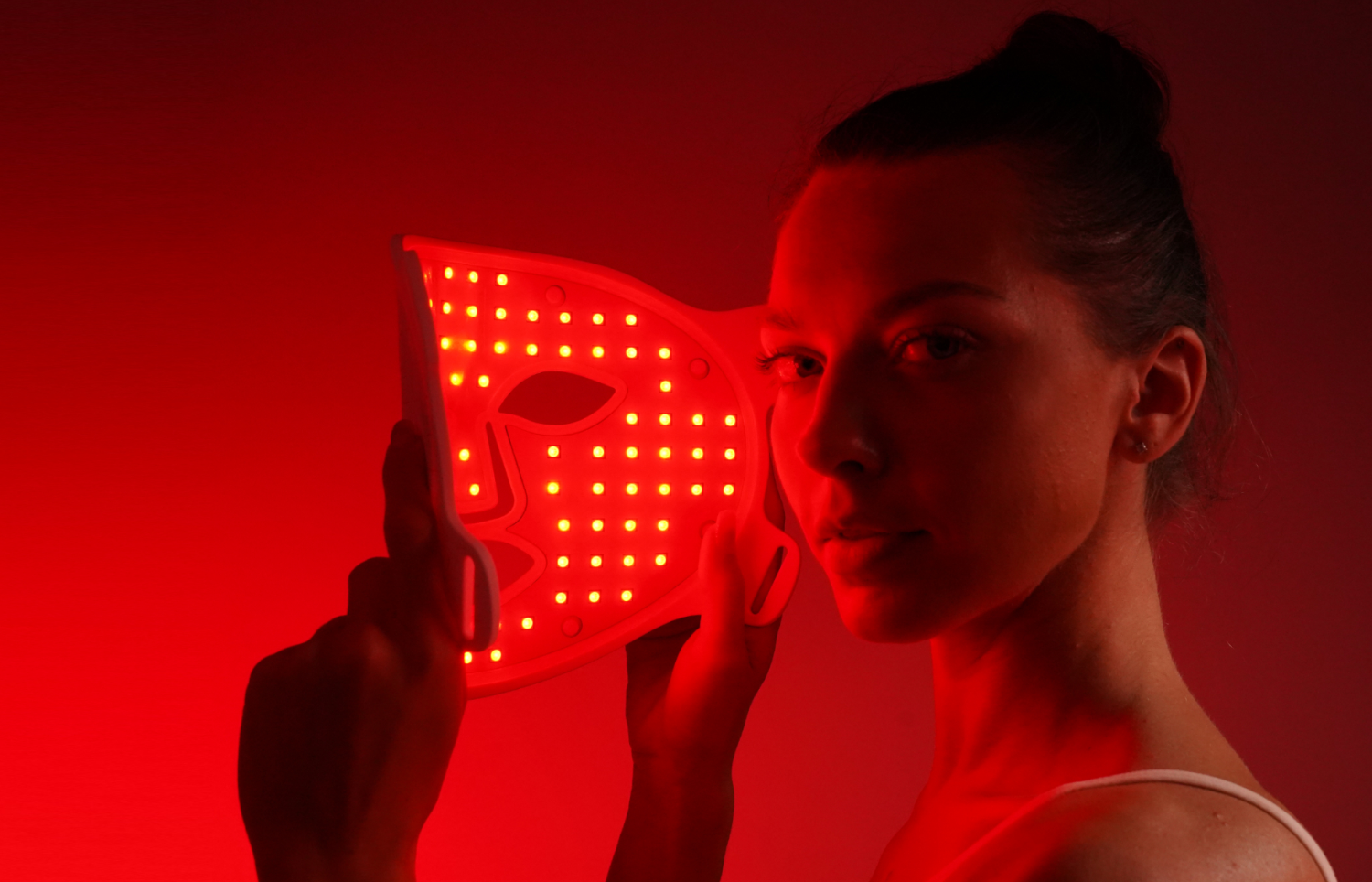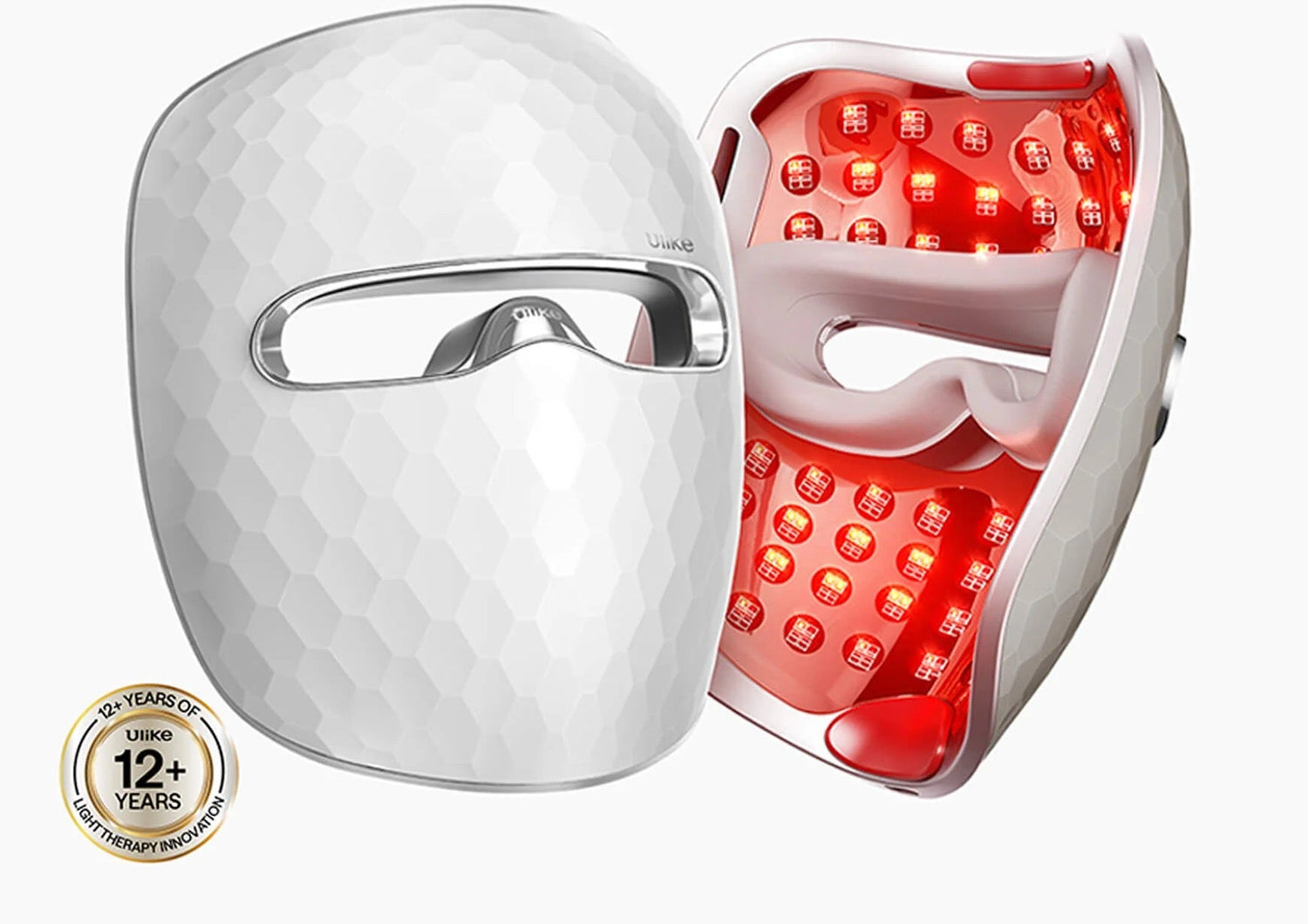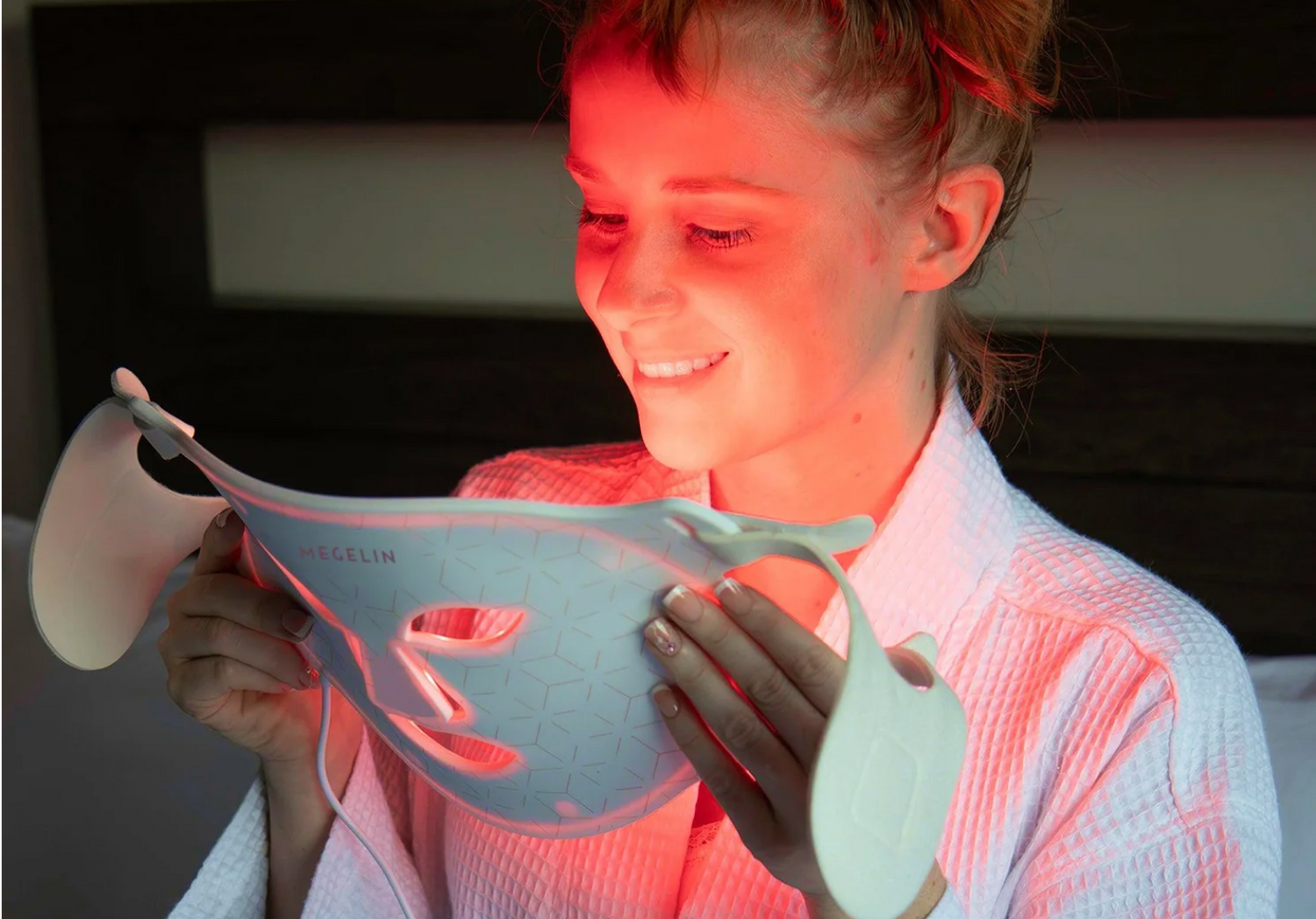
How Red Light Therapy for Insomnia Can Improve Your Sleep
megelinbeautyRed light therapy is a promising solution for insomnia, improving sleep, mood, and anxiety. By exposing the body to specific wavelengths of light, it can enhance the sleep-wake cycle and reduce sleep disturbances and negative emotions. This article explores how red light therapy benefits those with sleep disorders, covering its effects on alertness and sleep quality, practical usage tips, and potential side effects, providing a comprehensive guide to incorporating it into sleep routines.
The Relationship Between Light and Sleep
Understanding the intricate relationship between light exposure and sleep is pivotal for comprehending how red light therapy can be beneficial for insomnia. Light plays a crucial role in regulating our sleep-wake cycle, primarily through its effects on circadian rhythms.
Circadian Rhythms and Light Exposure
Circadian rhythms are internal biological clocks that govern our sleep-wake cycle, hormone release, eating habits, and other bodily functions. These rhythms are significantly influenced by environmental cues, especially light. Exposure to light helps to synchronize these rhythms to the 24-hour day. This synchronization is crucial because misalignment of circadian rhythms can lead to various sleep disorders, including insomnia.
Light's impact on circadian rhythms is mediated by special cells in the retina of the eyes, which detect light and send signals directly to the brain's circadian clock. This process helps the body determine when it is time to be awake and when to sleep. Effective management of light exposure could therefore be a strategic approach to enhancing sleep quality and duration.
Effects of Different Light Wavelengths
Different wavelengths of light have varying effects on the body. Blue light, which is prevalent in daylight, has been found to suppress the production of melatonin, a hormone that promotes sleep, and can therefore increase alertness and delay sleep onset. On the other hand, red light has a much lesser effect on melatonin suppression and is believed to contribute positively to the regulation of circadian rhythms without the disruptive effects associated with blue light.
Research indicates that red light therapy, utilizing specific wavelengths, can aid in adjusting the body's internal clock, potentially providing relief for those with disrupted sleep patterns, such as those seen in insomnia. By enhancing melatonin production and optimizing the timing of its release, red light therapy can improve sleep efficiency and overall sleep quality.
In summary, the relationship between light and sleep is governed by the biological impacts of light on our circadian rhythms and the specific effects of different light wavelengths. Understanding these mechanisms is essential for harnessing light therapy, particularly red light therapy, to combat sleep disturbances and improve sleep health.
Mechanisms of Red Light Therapy
Red light therapy, also known as low-level light therapy (LLLT) or photobiomodulation, is a therapeutic technique that utilizes low-intensity red or near-infrared light to stimulate cellular processes and promote health benefits [1]. This section explores the specific mechanisms through which red light therapy impacts sleep, focusing on the role of melatonin and its effect on sleep cycles.
Role of Melatonin
Melatonin, a hormone pivotal in regulating the sleep-wake cycle, is primarily produced by the pineal gland in response to changes in light exposure [1]. During periods of darkness, the pineal gland ramps up production of melatonin, signaling the body that it is time to sleep. Conversely, exposure to light reduces melatonin production, which helps the body remain alert and awake [1]. Red light therapy influences this mechanism by modulating melatonin production. Unlike other forms of light, red light has been shown to stimulate melatonin production even in the presence of ambient light, which can help synchronize the body’s internal clock and improve sleep patterns [1]. Studies have demonstrated that red light therapy can enhance melatonin levels in the body, leading to improved sleep quality and adjusted circadian rhythms [2].
Impact on Sleep Cycles
The effectiveness of red light therapy in adjusting sleep cycles is also linked to its ability to influence other physiological processes that affect sleep. For instance, red light therapy has been found to reduce inflammation, improve blood circulation, and promote muscle recovery, all of which can contribute to better sleep [1]. By enhancing these bodily functions, red light therapy helps create optimal conditions for the body to rest and rejuvenate during sleep.
Furthermore, the specific wavelengths used in red light therapy are crucial for its effectiveness. The therapy typically involves light with a wavelength around 670 nm, which has been shown to restore glutathione redox balance and boost energy production in cells [2]. This not only aids in melatonin regulation but also enhances overall cellular health, which is essential for maintaining regular sleep patterns.
In practice, individuals undergoing red light therapy are exposed to light boxes that emit light mimicking outdoor light, but without harmful UV rays. These sessions, typically lasting between 20 to 40 minutes depending on the intensity, help reset the circadian rhythm, making it easier for individuals to fall asleep earlier or sleep in later as needed [3].
In summary, red light therapy works through a combination of melatonin modulation and the enhancement of various physiological processes, leading to improved sleep efficiency and quality. By understanding these mechanisms, individuals can better utilize red light therapy as part of their sleep hygiene regimen to combat insomnia and other sleep disturbances.
Red Light Therapy in Practice
Using Red Light Devices
Red light therapy devices, designed to emit light within the 650 to 700 nanometer range, play a crucial role in mitigating conditions like Seasonal Affective Disorder (SAD), depression, and insomnia [4]. These devices are praised for their simplicity and ease of use, particularly for sleep optimization. For instance, incorporating a brief 5-10 minute session of red light therapy before bedtime can significantly enhance sleep performance and quality [4]. This is due to the calming effect of red light, which contrasts sharply with the stimulating properties of blue light, commonly encountered during the day.
Optimizing Therapy Sessions
To maximize the benefits of red light therapy for sleep, it is essential to adhere to an optimal protocol that considers timing, frequency, and duration of the therapy sessions. The most effective red light therapy devices provide light in the range of 630-670 nm, which has been shown to stimulate melatonin production and aid in regulating the circadian rhythm [5].
For optimal results, therapy sessions should ideally last between 10-16 minutes and be conducted 3-5 times per week [5]. It is recommended to schedule these sessions in the evening, roughly 1-2 hours before bedtime, to naturally increase melatonin levels and prepare the body for sleep [5]. Consistency is key, and maintaining regular therapy sessions at the same time each evening can help entrain the circadian rhythm, establishing a healthy sleep-wake cycle.
Furthermore, the placement of red light therapy devices is vital for achieving the desired outcomes. Devices should be positioned directly at the skin or very close to it, as this proximity allows for maximum penetration of red light, enhancing its therapeutic effects [6]. Regular use, ideally twice daily or at least several times a week, is recommended to maintain the benefits over time [6].
By understanding and implementing these practices, individuals can effectively use red light therapy as a powerful tool to improve sleep quality and manage insomnia, leveraging its non-drug, non-invasive nature for better health and well-being.
Potential Side Effects and Considerations
Possible Rispects
While red light therapy is generally considered safe, it is not entirely devoid of side effects. Common issues reported include headaches, eye strain, and skin irritation. These side effects are typically minimal and red light therapy remains a safer alternative compared to more intense light treatments such as UV therapy, which can cause burns, prematurely age the skin, and increase the risk of skin cancer [7]. Unlike laser treatments that can be painful and often leave the skin red and swollen, red light therapy is non-invasive and less harsh [7].
It's crucial to use red light therapy devices as directed to avoid potential risks. Misuse, such as overexposure, may lead to skin or eye damage. The long-term safety of these devices is still under investigation, which underscores the importance of adhering to recommended usage guidelines [8].
Consulting with Health Professionals
Before starting red light therapy, particularly for individuals with pre-existing conditions such as diabetes or a history of skin cancer, consulting with a healthcare provider is essential [7]. Certain medications or medical treatments can increase the risk of side effects, making professional guidance crucial for safe and effective use [7].
Health professionals can also help tailor the therapy to individual needs, adjusting session length, timing, and frequency to optimize benefits while minimizing risks. For example, individuals with eye conditions or sensitivities may need to take additional precautions or might be advised against certain types of light therapy [9].
In summary, while red light therapy offers a promising non-pharmaceutical approach to improving sleep and treating conditions like insomnia, it is not without potential side effects. Adhering to guidelines and consulting with health professionals can help mitigate these risks and ensure the therapy is both safe and effective.
Conclusion
Red light therapy significantly improves insomnia and enhances sleep quality by impacting melatonin production and adjusting circadian rhythms. This non-invasive treatment can be a valuable addition to sleep hygiene routines. Practical aspects such as optimal session times, frequency, and device placement highlight its effectiveness for sleep disorders. As a non-pharmacological approach, red light therapy offers a safe and simple option for better sleep health. Despite potential side effects, its overall safety and ease of use make it a promising solution for those seeking improved sleep and well-being.
FAQs
1. Can red light therapy alleviate insomnia?
Studies indicate that red light therapy does not significantly change any sleep metrics. In research involving men and women with sleep disturbances, participants underwent 2 hours of exposure to either bright white light or dim red light in the evening for 12 days, but no significant changes were observed.
2. What is the typical duration for light therapy to show results for insomnia?
Light therapy usually starts showing effects after one to two weeks. Users may find themselves less sleepy in the early evening and able to sleep later into the morning, achieving more overall sleep. Bright Light Therapy is particularly effective for treating Advanced Sleep-Wake Phase Disorder.
3. How does red light impact sleep and mood in both healthy individuals and those with insomnia disorder?
Red light has been found to increase subjective alertness, anxiety, and negative emotions in both healthy individuals and those with insomnia disorder (ID). These changes can directly or indirectly influence sleep through the mediating effects of negative emotions.
4. Is it more beneficial to use red light therapy in the morning or at night?
For an energy boost and improved mood, morning sessions of red light therapy are recommended. However, if the goal is to enhance sleep quality and relaxation, using red light therapy in the evening may be more effective. Some individuals opt for two sessions daily—one in the morning and another in the evening—to maximize benefits.
References
[1] - https://www.cnn.com/2023/06/01/health/red-light-therapy-benefits-sleep-wellness/index.html
[2] - https://www.ncbi.nlm.nih.gov/pmc/articles/PMC3499892/
[3] - https://www.sleepfoundation.org/light-therapy
[4] - https://vitalredlight.com/using-red-light-therapy-for-sleep-and-relaxation/
[5] - https://www.spectraredlight.com/red-light-therapy-for-better-sleep/
[6] - https://healthlightllc.com/2023/03/16/red-light-therapy-for-sleep/
[7] - https://www.krysushp.com/learn/red-light-therapy-side-effects/
[8] - https://my.clevelandclinic.org/health/articles/22114-red-light-therapy
[9] - https://www.webmd.com/sleep-disorders/insomnia-light-therapy










